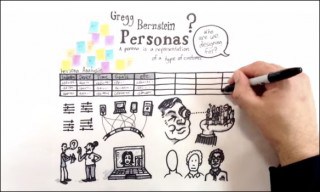A comprehensive collection of UX methods and techniques available for use on UX projects.
Mix and match these UX techniques to create a UX process best suited to the project at hand. We’ll be updating this page regularly with additional content, links and tutorials about how to apply these techniques.
Are we missing a UX technique? Perhaps you’d like to write a tutorial or case study about one of these techniques? Get in touch!
Looking for an online course that teaches how to use these techniques? View our big list of UX courses.
Japanese translation of this page by Shu Wakasa.
| Technique | What It Is | When To Use It | How To Use It |
|---|---|---|---|
| Stakeholder Interviews | Conversations with the key contacts in the client organisation funding, selling, or driving the product. | Strategy, Research | Steve Baty's article, Conducting Successful Interviews With Project Stakeholders is worth a read as it contains lots of tips gleaned from experience. |
| User Interviews | User interviews are a key activity for understanding the tasks and motivations of the user group for whom you are designing. Interviews may be formally scheduled, or just informal chats (for instance, in a suitable location that your target demographic are present). | Research | Interviewing someone takes practice. Read how to how to improve your interview skills for tips on getting better. |
| Personas | A persona is a fictitious identity that reflects one of the user groups for who you are designing. | Analysis |  Creating personas for your project involves morphing qualitative and quantitative data from analytics, surveys, interviews, user testing sessions, and other research activities into a handful of representative âtypicalâ users. These personas are assigned names, photographs, motivations, goals, and a believable backstory that is rooted in the backgrounds of real people using your website or app. Read the process Matt followed for this activity at SitePoint or take a look at Gregg Bernsteinn's short animated video. |
| Mental Models | A mental model diagram is a fishbone or horizon diagram where the top towers represent individuals' motivations, emotions, and stories related to their experience in achieving a particular goal, regardless of the tools they use. The top part of the diagram is person-focused, not solution-focused. The bottom towers of the diagram represent the features of your organization's offerings, aligned beneath the appropriate upper towers that they support the best. You can see where your organization's design and business requirements support people's goals well and where they need improvement. The diagram as a whole is generative, not evaluative, helping your organization realize weaknesses and gaps in the way you support people and adapt existing products, services, or processes to particular behavioral audiences or situations. | Analysis | How it works: stories collected from essays, web, empathic interviews, etc. are collected, combed for relevant actions, emotions, and philosophies and grouped in mental spaces. Requirements gap analysis is then conducted by slotting requirements into the mental spaces and seeing how they align with what users have said. Advantages include an in-depth understanding of gaps between individual's perceptions and motivations vs. business and design requirements. Since they are unstructured and open ended interviews, the likelihood of the results being skewed by stakeholders is minimal, which leads to a more accurate understanding of what will benefit and be well-received by the users. There's some flexibility in data collection--it can come from blogs, Twitter, diary entries (see Diary Studies), etc. as long as it is the voice of the individual and not being generated by highly directed questions (courtesy Mike Oren, PhD). Indi Young describes the process in her book of the same name. |
| Voice of the Customer | A detailed set of customer wants and needs organised into a hierarchy and prioritised in relative terms of importance & satisfaction with current alternatives. The information is sourced directly from interviews and enquiries conducted with customers. | Explore, Immerse | Useful at the start of a new product, process or service design initiative to better understand the customer, and as the key input for defining and setting detailed specifications. |

